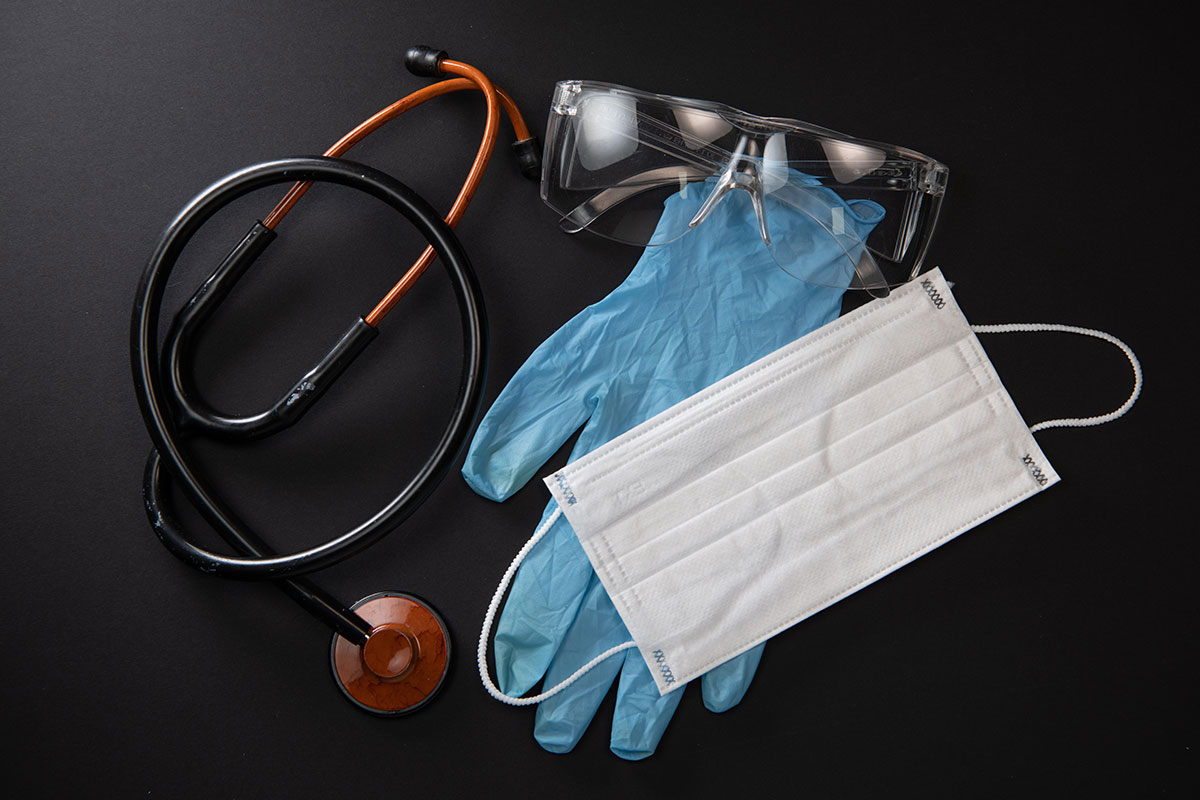
Do You Have Gall Bladder Stones? Are You Aware It Can Lead To Cholecystoenteric Fistula?
By Dr. (Prof.) Purshotam Lal in Cardiology
May 20, 2020
A lot of people develop medical conditions that can be more or less categorized into lifestyle diseases. Gall Bladder Stones is one such condition that medical practitioners attribute to improper diet habits. These conditions are treatable upon early diagnosis and proper medications, however, certain times these conditions can lead to other complications such as Cholecystoenteric Fistula.
What is a Cholecystoenteric Fistula?
Before we can explain what exactly Cholecystoenteric Fistula is, we would need to explain Fistula first. A Fistulais an abnormal connection between two epithelialized surfaces (two hollow spaces) in the body, such as intestines, gall bladder, blood vessels, etc.
Cholecystoenteric Fistula is an uncommon complication of cholelithiasis (gall bladder stones) that arises when there is an abnormal communication between the gall bladder and an adjacent hollow viscous such as the stomach, duodenum or colon.
It is advisable to go for a thorough check-up at the best super specialty hospitals in India for early diagnosis and treatment of such conditions, otherwise, they may lead to further complications.
Causes of Cholecystoenteric Fistula
Fistula can form due to inflammation causing sores or ulcers inside the organs. The body’s need to create a passage for drainage of pus from the infected area may result in the creation of an abnormal connection between surrounding hollow spaces, thereby causing Fistula.
Cholecystoenteric Fistula in particular usually results due to inflammation of associated acute cholecystitis (inflammation of Gall bladder) and occurs between the gallbladder and an adjacent hollow viscous.
A second reason for fistulization is pressure necrosis from a large stone within the gallbladder lumen.
Signs and Symptoms
- Most patients who develop a cholecystoenteric fistulae do not have any particular symptoms or signs to indicate the presence of the Fistula pre-operatively.
- As in other patients, the common symptoms at presentation are those related to cholecystitis (Gallbladder stones) or complicated cholecystitis.
- It is usually seen to develop in patients with the long-standing condition of gallbladder stones. 0.15–4.8% of patients undergoing biliary surgeries may develop a CEF.
- Despite the above-mentioned facts consultation with a specialist at the best multispecialty hospital in India may increase the chances of diagnosis.
Diagnosis of Cholecystoenteric Fistula
- The diagnosis is difficult preoperatively and rarely an ultrasound or MRCP may reveal the presence within the biliary system. In most cases, the Cholecystoenteric Fistula is suspected intraoperatively (during surgery).
- A high index of suspicion is required in cases where one finds unusually dense adhesions (during surgery) around a gall bladder that has a thick and contracted wall.
- The most common cholecystoenteric fistulae are of the cholecystoduodenal variety (70%), followed by cholecystocolic (8% to 26.5%) and cholecystogastric fistulae.
- A condition of combined fistulae involving gall bladder, colon and intestine are rare. A patient may present with intestinal obstruction (gallstone ileus) due to the migration of a stone from the gall bladder to the intestine through the fistula.
Cholecystoenteric Fistulae Treatment
The surgical closure of Cholecystoenteric Fistulae is done to prevent the communication between the gallbladder and intestine or stomach.
Prior to advances and experience in laparoscopy, most surgeons at the best multispecialty hospital believed that the presence of a cholecystoenteric fistulae mandated an open surgery for treatment.The reason for such belief is the presence of dense adhesions that prevents a clear understanding of the anatomy and increases the risk of dangerous complications.
However, the view of surgeons has changed over time regarding the requirement of open surgery for Cholecystoenteric Fistulae treatment.
Laparoscopic management is an alternative Cholecystoenteric Fistulae management procedure and there are now an increasing number of reports on the safe and successful laparoscopic management of patients with CEF.
Our Experience In Diagnosis and Treatment
Our team at Metro Hospitals have had their share of successful experience of cholecystoenteric fistulae diagnosis and treatment. Over 2 thousand laparoscopic cholecystectomy were done and out of that, around 35 patients had cholecystoenteric fistulae, which is a high number considering the rarity of the disease. It is also noteworthy that all cases were diagnosed intraoperatively.
Ultrasound was the basic investigation done in all cases. Overall 23 patients (65.71%) required a laparotomy. The remaining 12 (34.28%) cases were managed completely by the laparoscopic approach.
It should be noted that the incidence of successful laparoscopic repair of CEF has increased with our increasing experience in such procedures.
We at the metro group of hospitals are always committed to realizing the vision of providing world-class healthcare at an affordable cost and to achieve excellence in Healthcare services by offering exceptional care through state-of-the-art technology.
The Metro Group was established in the year 1997 by Padama Vibhusan, Padma Bhusan and Dr. B C Roy National Awardee Dr. Purshotam Lal with the vision to provide world-class healthcare amenities to his countrymen at an affordable cost.
Metro Group of Hospitals are the leading healthcare centers in our country boasting an ultra-modern infrastructure providing multispeciality care by an exceptional team of healthcare professionals under the leadership of world-renowned interventional cardiologist Dr. Purshotam Lal. We at Metro hospitals provide multispecialty care for 35 Chief and Allied-specialities that include Anaesthesiology, Cardiology & CTVS, Dentistry, Gastroenterology & Gastro Surgery, Internal Medicine, Neurosciences, Obstetrics and Gynaecology, Oncology & Onco Surgery, Orthopaedics, Joint Replacement & Spine Surgery, Paediatrics & Neonatology, Physiotherapy Plastic, Cosmetic & Reconstructive Surgery, Pulmonology & Sleep Medicine, Rheumatology, Stem Cell Therapy, Bariatric & Metabolic Surgery, Blood Bank, Dermatology, Endocrinology And Diabetes, ENT & Cochlear Implant, Haemotology, Holistic Medicine, Homeopathy, Interventional Radiology Laboratory, Laparoscopic & General Surgery, Nephrology & Renal Transplant, Nutrition & Health, Ophthalmology, Metro Eye Centre, Psychiatry, Psychology, Radiology, and Urology.
Dr. Purshottam Lal is an internationally acclaimed Interventional Cardiologist who epitomizes the best in professional excellence and service to humanity, especially the poor and the needy.
Dr. Lal was trained at world renowned medical institutions in the UK, Germany, and the USA. He is fellow of American College of Cardiology, American College of Medicine, Royal College of Physician (Canada), British Cardiovascular Interventional Society, German Society of Cardiovascular Research, Fellow of Society of Cardiac Angiography and Interventions, USA, etc. He has the unique distinction of pioneering the largest number of procedures in the field of Interventional Cardiology for the first time in the country such as Slow Rotational Angioplasty, Atherectomy, Rotablator, Stenting, Heart hole closure, etc.
He has developed techniques of Aortofemoral bypass support (partial artificial heart), Opening of tight heart valves with echo without cath lab. He has performed the first case of Non-surgical heart hole closure (ASD) with monodisc device and the first case of Non-surgical aortic valve replacement with core valve, both being the first time in the world. He is the first investigator of Inoue Balloon Mitral Valvuloplasty in the Country and his name has been listed in the ‘Limca Book of World Records’.
A crusader against unethical commercialization of medical services, he has committed himself to provide to the middle class, poor and the needy the latest cardio-vascular procedures at the most affordable cost. In pursuance of his mission, he has established thirteen state-of-the-art Hospitals and three satellite units. Such is Dr. Lal’s commitment to his mission that an ever-increasing number of poor patients have been treated either free of cost or at concessional rates and ‘No patient is ever turned back for want of money’. He has been named as ‘Creator of Affordable Healthcare’ by ‘Express Healthcare’, a leading health magazine and has been a trendsetter for NRIs to return to India to serve the needy people.
Dr. Lal has been decorated with several prestigious awards:–
– 2nd Jawaharlal Nehru International Excellence Award (1990), Rajiv Gandhi Award (1991), Dr.V.V.Shah Oration Gold Medal by Cardiological Society of India (1992) for his pioneering contributions in Interventional Cardiology.
– Distinguished Achievement Award of Highest Order by the National Forum of Indian Medical Association (2006-07) for performing the largest number of angioplasties/stenting as a single operator in the country.
– ‘Life Time Achievement Award’ by Shri Arun Jaitley on behalf of Delhi Medical Association and ‘Life Time Achievement Award’ by Dr. Lilly Engineer, Professor of Harvard University on behalf of ‘Times of India’.
– Padma Bhushan (2003), prestigious Dr. B.C.Roy National Award (2004) and Padma Vibhushan (2009) by the President of India.
He has contributed over one hundred research papers, articles, chapters and authored a book “Cause and Prevention of Heart Diseases”. He has been a Member at Central Council of Health and Family Welfare, Expert Committee for medical devices, Ministry of Health, Govt. of India, Delhi Medical Council, Standing Committee ESI Corporation – Ministry of Labour & Employment, Govt. of India and Member Board of Governors, Medical Council of India from May 2011 to May 2013.







